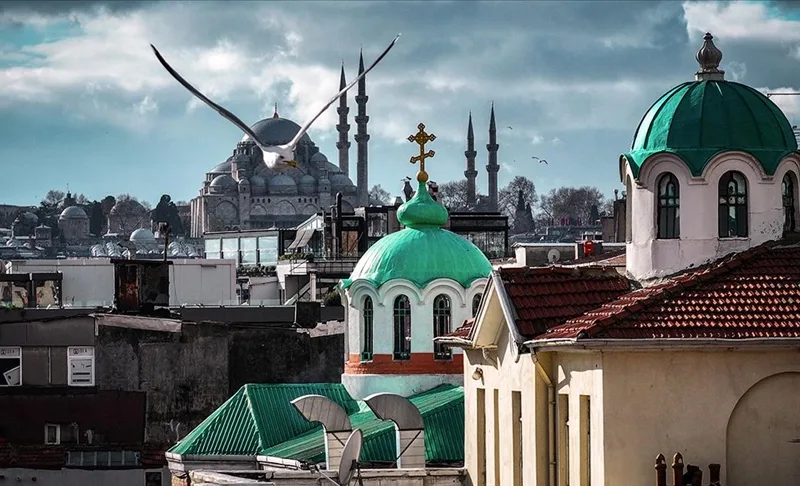The “rooftop churches,” built on the inns constructed at the end of the 1800s in Istanbul to accommodate Russians traveling to Jerusalem for pilgrimage, still open their doors today to those who wish to worship.
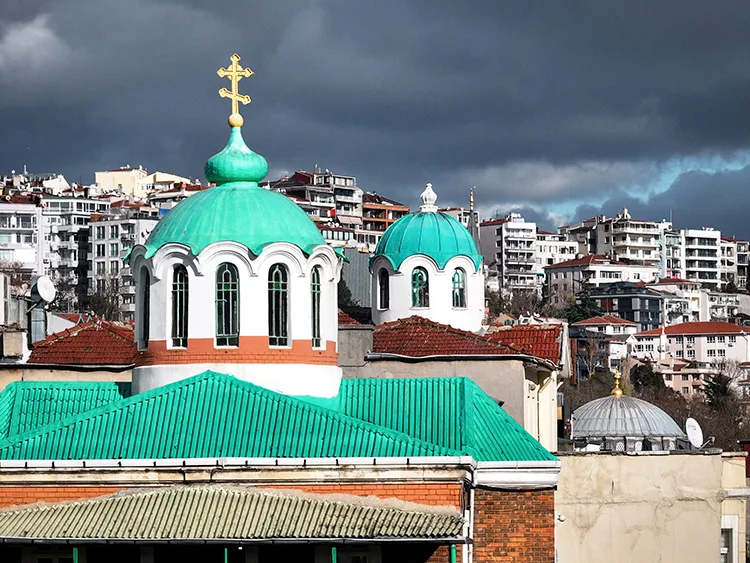
Throughout the ages, Istanbul has been known by many names. After becoming a settlement during the Roman Empire, it turned into one of the most migrated-to cities. With its location serving as a bridge between the Middle East and Europe, the Bosphorus—referred to as the “pearl,” its millennia-old history, and its round-the-clock vibrant life, the city has always been at the center of global attention. Since its founding, it has served as the capital of three civilizations.
With waves of migration from all around the world, Istanbul became a cosmopolitan city where people of many different nations lived together. Countless places of worship were built in the city, where mosques, churches, and synagogues stand side by side. Thus, Istanbul became a host to all religions and cultures, earning the title of “Capital of the World.” Because of its location as a crossroads, the city also became a resting point for travelers over time.
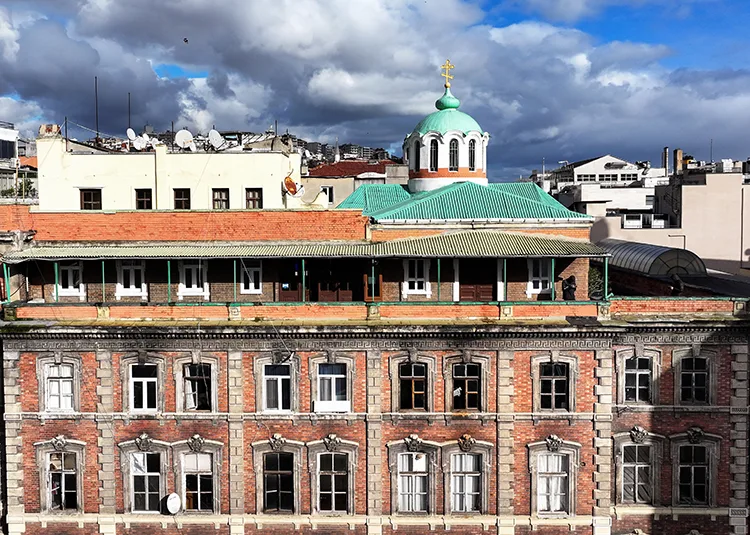
In the 19th century, churches were built on the rooftops of inns in Karaköy, a district of Beyoğlu, for this very purpose. These “rooftop churches,” unnoticed by those walking down the streets but visible from above, continue to shed light on the city’s history while still hosting worshippers today. Religious services are still held every Sunday and on religious holidays in these rooftop churches that have survived to the present day.
The History of the Churches
At the end of the 1800s, monks from the Mount Athos Monastery in Greece built inns in Karaköy for Russian Orthodox Christians traveling to Mount Athos, those going on pilgrimage to Jerusalem, and those journeying for trade, so they could rest and take shelter.
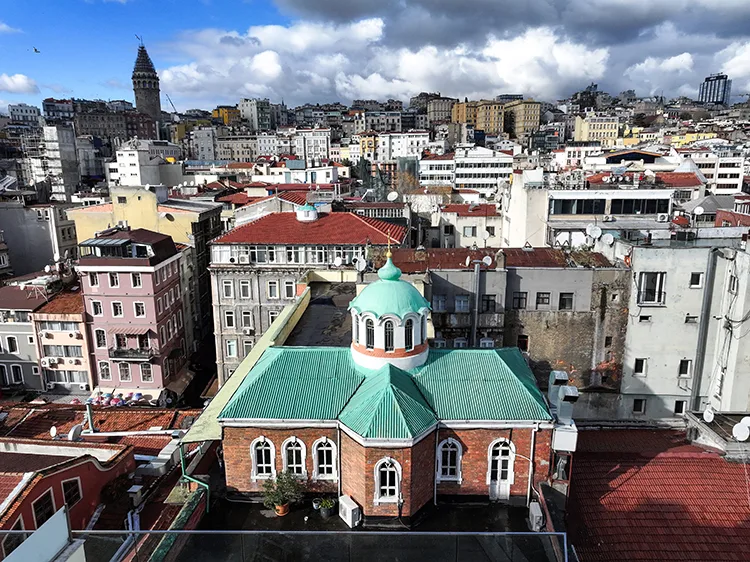
To enable the Russians staying there to worship, small room-like churches were built on the rooftops of these inns. These churches, named “Aya Andrea,” “Aya Panteleymon,” and “Aya Ilya,” became places where Russians staying in Istanbul performed their religious rituals.
Because they were located on the top floors of the inns, these structures also came to be known as “rooftop churches” or “apartment churches.” Later, they also opened their doors to those fleeing the Bolshevik Revolution in Russia on October 25, 1917. Refugees who escaped to Istanbul continued their worship in these rooftop churches.
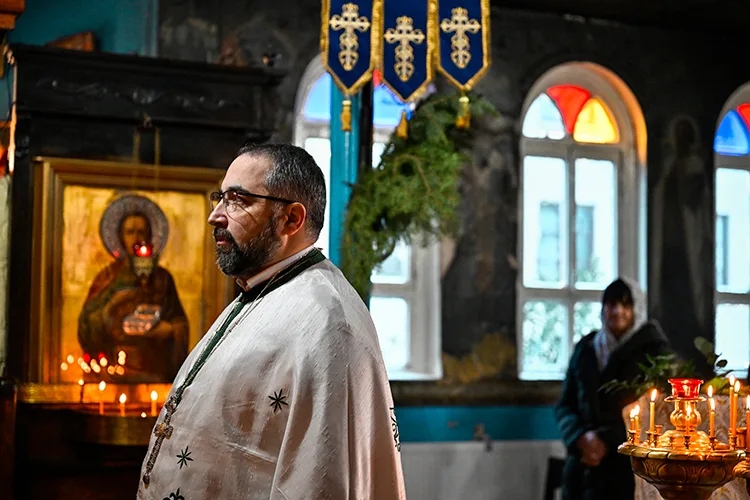
Among these churches, “Aya Ilya” closed in the 1970s. “Aya Andrea” and “Aya Panteleymon,” which became landmarks of Karaköy, have been welcoming Orthodox Christians from many different countries for 130 years.
Preserving the Church’s Original Character
Located on the fifth floor of an inn originally built for accommodation, the “Aya Andrea” church has blue-painted walls adorned with cross symbols. Items connected with the history of the building are displayed in a small museum inside. The entrance walls of the church are decorated with photographs of worshippers who have prayed there over the years.
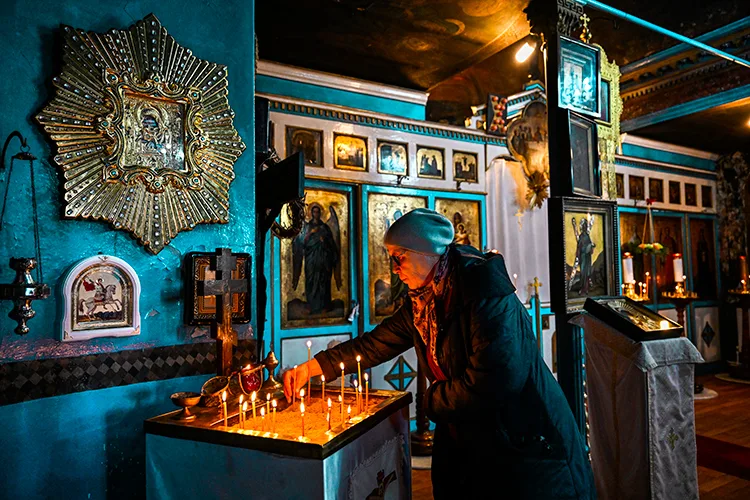
The church, about the size of a single room, holds services every Sunday and on religious holidays. Prayers are recited in both Russian and Turkish. After the service, the congregation gathers for breakfast together.
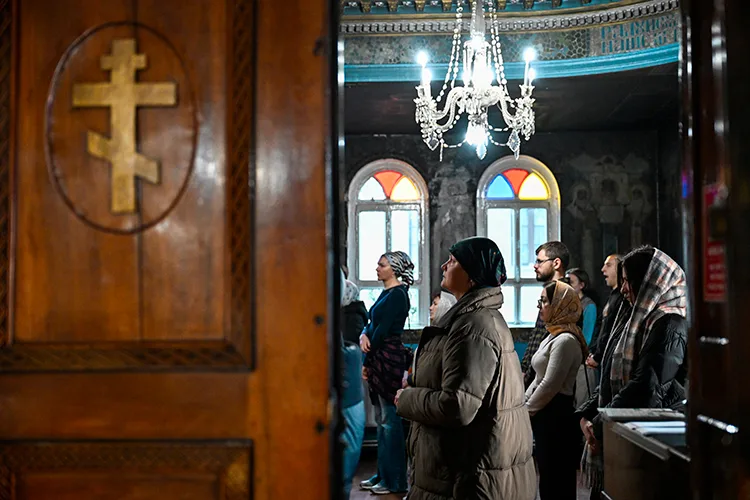
The Russian Orthodox Church, which is affiliated with the Ecumenical Patriarchate of Constantinople (the Fener Greek Patriarchate), is also open to visitors from 9:00 a.m. to 5:00 p.m. every day except Tuesday. Those attending services or visiting are required to dress appropriately for a place of worship, and women must wear headscarves.
Worshipping in the Same Church for 31 Years
Lina Kılıç, a Russian national who came to Turkey from Latvia in 1992 and now lives in Istanbul, said she has been worshipping at Aya Andrea Church for 31 years.
Kılıç explained that the church, founded in 1888, has never closed its doors. She added that people are often surprised to find a church located on the top floor of a building. She also noted that the walls of the church are decorated with paintings by artist Nikolai Konstantinovich Perov, created in 1928.
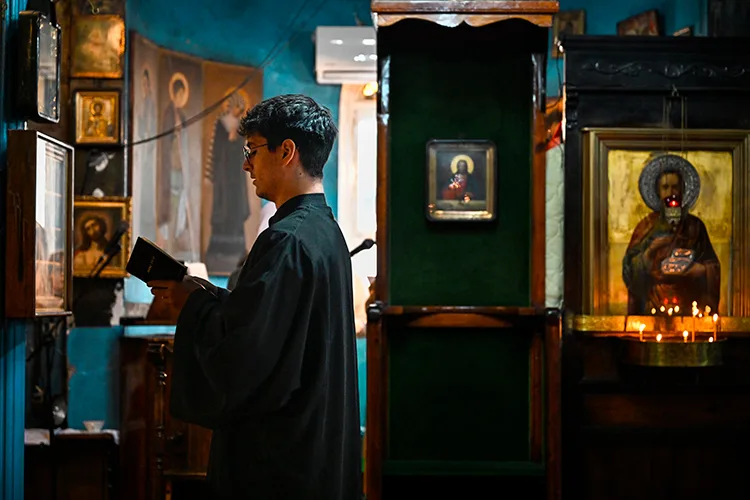
Kılıç said that it is immediately clear the place is a Russian church and that she knows everyone who comes there. She emphasized that worshippers are not only Russians but also Ukrainians, Belarusians, Moldovans, as well as Gagauzians, Georgians, Turks, and people from other nations.

